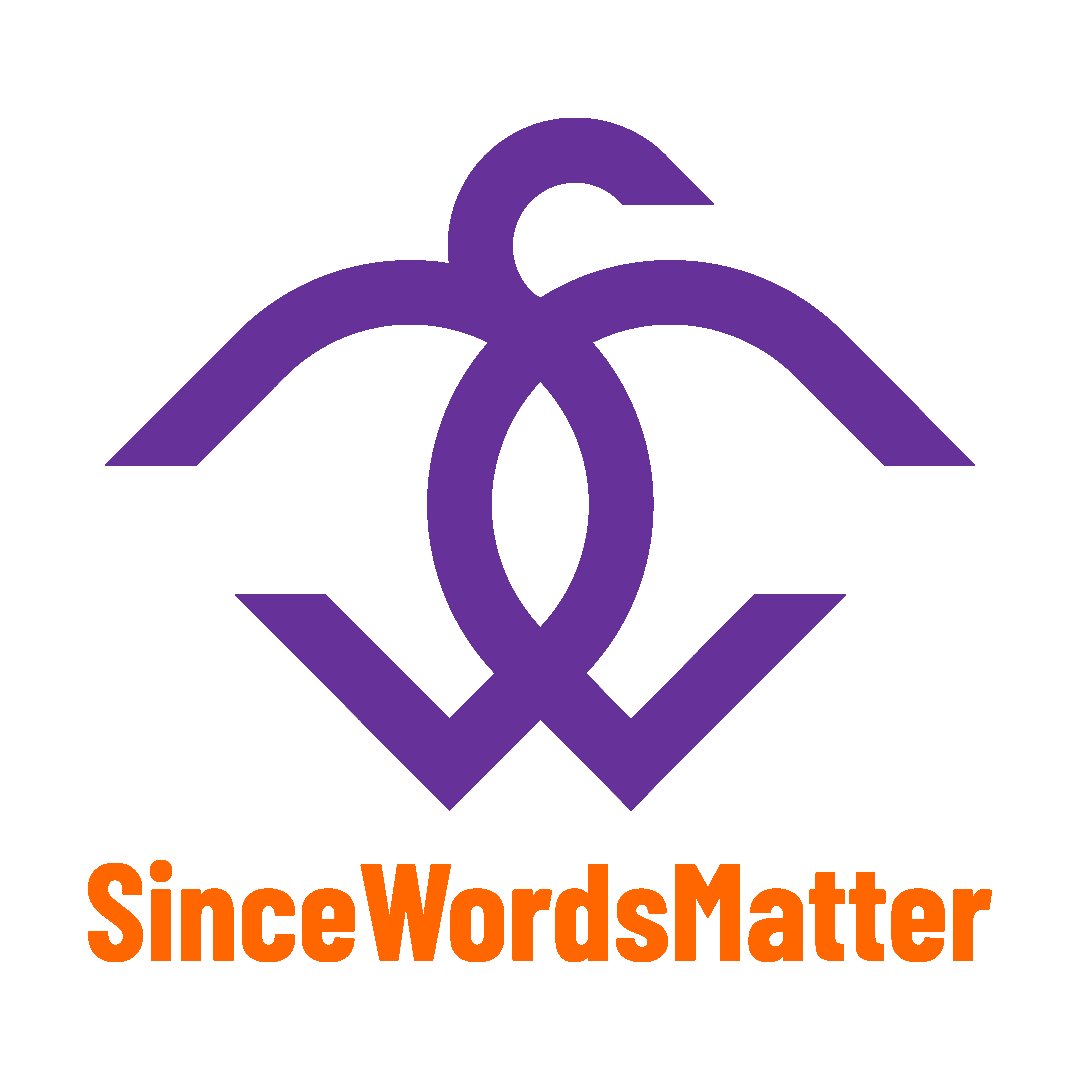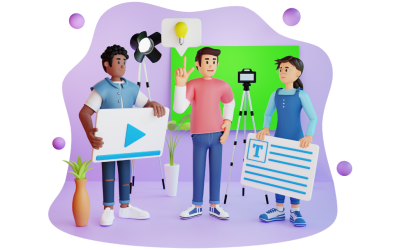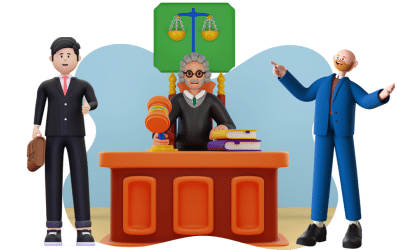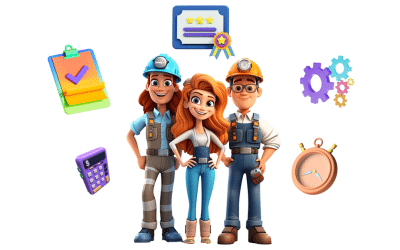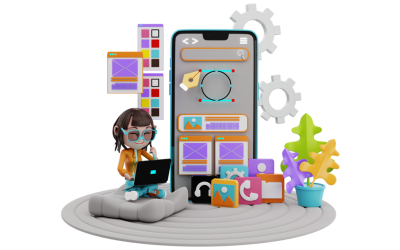Last Update on:

Finding a trustworthy, well-versed, and top-notch subtitle translation service can feel like an endless task. There are countless audiovisual translation companies on the internet, and you’ve most likely had a frustrating money-losing partnership with some of them. Maybe you already have the advisable one, but they’re missing some key features like support for Asian languages or a focus on recruiting African translators. Besides, how can you be certain that the subtitles are not only understandable but also elicit the same emotions as the original video?
Table of Contents
- Who needs audiovisual translation services?
- Which one is better: subtitling, dubbing, or voiceover?
- I need subtitles; why should I use professional subtitle translation services?
Who needs audiovisual translation services?
You might want to interview a non-native English speaker whose English is either non-existent or poor. It is possible, but not always practical, to use an interpreting service for a variety of reasons, including cost, distance, and lack of availability. Consider this: what if it were possible to conduct the interview in the respondent’s native language and then have the results translated? Subtitling, or audiovisual translation, is the right solution.
You’ve considered reaching out to a truly global audience rather than just the 15% of the world’s population who understand English, or you might want YouTube subtitle translations that enchant your viewers as much as the source words enchanted you. You may be searching for Facebook video subtitling in an effort to reach the 85% of viewers who prefer to watch videos without sound.
You are a manager searching for audio description (AD) to make your audiovisual products more accessible to international audiences who are blind, visually impaired, or partially sighted. Perhaps you’re an advertiser who’s decided to localize ads for new global markets to increase sales or use video marketing and boost SEO by translating the subtitles for the main video of the marketing campaign.
Have you been looking for script translation services for your film or television show? Or do you require subtitles for your multilingual documentary to help people see the world through the eyes of Asian or African culture? Or maybe you’d like to broaden the reach of your children’s show by bringing it to audiences in other countries.
Undoubtedly, some excellent audiovisual translators of rare and little-known languages exist. Finding them, however, proves to be a challenging issue. With SinceWordsMatter, you can quickly and easily establish contact with a group of expert subtitle translators who specialize in infrequent languages.
Which one is better: subtitling, dubbing, or voiceover?
Since some countries’ audiences prefer subtitles and others prefer dubbing, the decision ultimately rests with you and the people you’re trying to reach. You should, however, keep in mind the following benefits of using subtitle translation:
- When compared to the cost of subtitling, the cost of dubbing, voiceover, and video production is typically between ten and fifteen times higher;
- An actor is physically present in a scene; thus, they are better able to convey the intended tone and nuance through finer details of body language and expressions (well-preserved in subtitle translation) that a voice actor cannot simply replicate;
- The original character is inevitably altered since voice actors and actresses never have the same vocal qualities as the original actors and actresses;
- The age, accent, and previous famous roles played by voice actors and actresses can alter the character you intended to create;
- Sometimes, an actor’s or actress’s accent can make it difficult for viewers to follow what they’re saying, but subtitles can make it a lot easier;
- Dubbing and voiceover scripts are constrained not only by the characters’ speaking rates but also by their lip movements;
- There is a time saving when translating subtitles, compared to dubbing and voiceover;
- While a single translator can handle all of the work involved in creating subtitles, managing the workflow for dubbing and voiceover requires a much larger crew and more specialized equipment (translator, voice actors, sound engineer, recording equipment, video editing equipment, post-production editors, etc.);
- To begin producing dubbing and voiceover, you must first translate. Subtitle translation services, on the other hand, allow the final product to be released as soon as the subtitles have been translated;
- Editing subtitle translations is a lot less difficult in case the video is altered;
- Subtitles make a movie more accessible to people with hearing loss, especially when closed captions are used to explain what sound effects are being used;
- It’s challenging to translate songs into a singing style without losing some of the elegance and emotion of the original;
- Subtitles are always useful for language learners;
- Subtitles make it easier for viewers to learn technical terms when they are used for training and E-learning material;
- It’s possible to turn the subtitles on and off.
On the other hand, the following are some benefits that come along with dubbing and voiceover:
- Accessibility for the visually impaired is improved through dubbing and voiceover;
- Dubbing and voiceover help those who have trouble reading subtitles, such as the illiterate and young children;
- One can still enjoy a film even if they are too far away to see the screen or don’t have their glasses at hand;
- No pause is necessary if the audience has to look away for any reason, such as to check their phone or a child;
- The visuals can serve as the primary point of interest, rather than the words in the subtitling;
- Reading subtitles can be a slow process for young readers, resolved by dubbing or voiceover.
Subtitling, dubbing, or voiceover is also a matter of personal preference and meeting the demands of the intended viewers. When deciding which strategy is best for a given project or audience, it is necessary to consider each method’s benefits and drawbacks. The ultimate aim is to facilitate better communication between content creators and viewers while improving the viewing experience.
I need subtitles; why should I use professional subtitle translation services?
You can protect your investments, maintain your reputation, and, most importantly, ensure your messages connect with varied audiences worldwide by prioritizing quality translation. Most of the time, a full retranslation is required if a poor subtitling service is used. Even more issues arise as a direct result of bad subtitles in various fields, such as:
In Marketing
- Users will click away from your page after only a few seconds of your video playing, which will harm your search engine rankings;
- The message you intended to convey with your video is lost, resulting in a disconnect between the brand and its core values and target audiences;
- Your entire budget is wasted on a fruitless video marketing campaign, as the content fails to reach or resonate with the intended audience effectively;
- When subtitles fail to match the spoken content, viewers feel deceived, and customers and followers who have previously been dedicated to you will likely abandon you;
- Using inaccurate translations could lead to legal issues or a violation of advertising regulations, and customers can seek financial compensation through laws that prohibit false advertising when they are deceived;
- Poor subtitles have the potential to turn away foreign viewers who could feel left out or misrepresented, which in turn hinders the brand’s capacity to reach new markets beneficially;
- Your target market may conclude that you don’t value them enough to invest in professional translation services.
In Entertainment Industry
- The audience does not well receive your film;
- The people you filmed in that area probably think you consciously meant to insult them in your documentary;
- The existing characteristics of an infamous community are mistranslated to ones that did not belong there;
- Anger and resentment arise from the community your video was meant to honor because they feel betrayed by you for providing misinformation that is, in fact, a mistranslation;
- Your documentary’s target audience may feel that you consciously omitted important details to dishonor them;
- The targeted children of your show end up doing the wrong things instead of the right ones;
- The theater production gem you’ve worked so hard to create and win awards with has been shattered;
- If your audience is fluent in the original language of the video, they will be confused by the discrepancy between what they hear and what they read in the substile translations, and they may even begin to distrust you as a result;
- The failed subtitling service did not take into account all the linguistic, stylistic, contextual, and cultural factors, as well as the influential factors of the video, such as its speed.
In Education
- Targeted students are not able to comprehend the teaching material you are presenting to them, leading to a decline in academic performance and learning outcomes;
- Misinformation can result from subtitles that are not accurate, and it can be ingrained in students’ minds, having a lasting impact on their knowledge and comprehension;
- Students learning a new language lose out on opportunities to learn proper grammar, idioms, and cultural sensitivity if they are improperly translated;
- No matter how good the translation is, students lose interest when the subtitles don’t synchronize with the audio, causing cognitive dissonance that takes students’ attention away from the content;
- If students encounter difficulties in understanding subtitles because they are not properly translated, it could result in a decline in interest and engagement with the learning process;
- When students find the subtitles to be unprofessional or unreliable, it can affect their trust in the instructional materials and the institution that provides them;
- Poor subtitles make the material inaccessible to students with hearing impairments or who depend on subtitles to understand the material better, and inequality is exacerbated by inaccessible content.
Considering these complex issues, it is quite evident that you need to hire professional subtitle translation services. Not only do these services provide precise language, but they also have a sophisticated grasp of educational requirements, cultural settings, and stylistic factors. You can’t put a price on having competent subtitle translation services in today’s globally linked world, where good communication knows no language limits.
We make it possible for you to communicate fluently in foreign languages without having to study them. With a wealth of experience in the field, competitive rates, and access to a global network of trustworthy translators fluent in both widely spoken and less common languages, we are your best bet. To reach a wider audience, we can also assist you in localizing your messages for the target language.

Subtitle translation, dubbing, or voiceover? Any option you pick will do!
SinceWordsMatter provides transcription and translation services for you.
